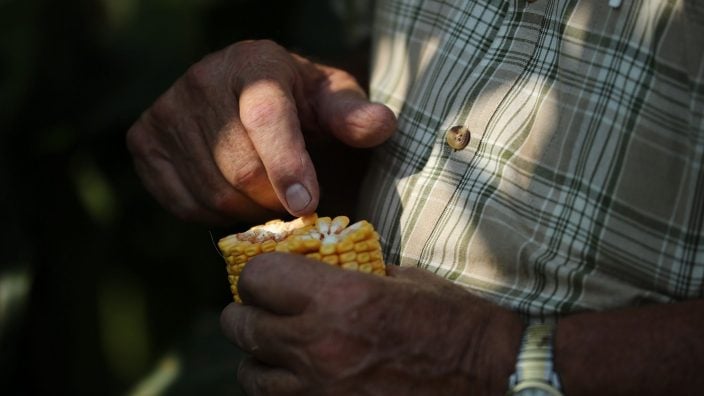Applications for Ohio Farm Bureau Health Plans now available
Members have three ways to apply: contacting a certified agent, calling 833-468-4280 or visiting ohiofarmbureauhealthplans.org.
Read MoreIf there’s anything farmers understand, it’s uncertainty. From volatile weather to price swings to a global pandemic, they have persevered through it all.
The best way to protect against the unknown is with a sound risk management plan, said Mike Goins, Farm Credit Mid-America’s Regional Vice President for Crop Insurance.
“It’s the only way a grower can really guarantee their income,” he said. “There are so many risks, and crop insurance is how farmers can deal with those risks.”
While crop insurance is a must, policies aren’t one-size-fits all. There are many combinations of policies to choose from, and selections must be tailored to a farm’s unique circumstances. Goins recommends growers start planning now by knowing intended acres, what their average yields are and their cost of production for the upcoming crop year.
“Understand your business plan and get crop insurance for that specific plan,” Goins said.
With so many different policies – subsidized, unsubsidized, government programs– the selection process can be confusing. Farm Credit Mid-America has 64 non-commission-based agents across Ohio, Indiana, Kentucky and Tennessee, who continuously evaluate and analyze new policies and programs for customers.
“Choosing a policy is just one step in the process,” Goins said. “Having a knowledgeable agent and solid company behind you is key.”
Additionally, Farm Credit Mid-America customers have access to an exclusive data-driven tool that allows agents to use real-time data, including a producer’s unique, individual policy information, county data and specific crops and yields. The program then gives a variety of recommendations customized to that unique operation.
“There are a thousand what-if scenarios,” Goins said. “Our tool takes the guesswork out of choosing what’s right for you.”
Growers have until the March 15 sales-closing deadline for spring crops, but the selection process should begin now. Determining average yields, costs to plant, and potential risks will help growers and agents find the right policies.
“Get started early so you can understand your options and not have to make a rush decision,” Goins says. “With so much uncertainty, crop insurance is the best way to mitigate risk.”
To connect with a Farm Credit Mid-America agent in your area, contact 800-444-FARM or visit us at e-farmcredit.com.


Members have three ways to apply: contacting a certified agent, calling 833-468-4280 or visiting ohiofarmbureauhealthplans.org.
Read More

Ryan Hiser has experienced first-hand the importance of having the opportunity to vote on issues that will affect his family operation and other farmers.
Read More

Bill Patterson, Cy Prettyman and Adele Flynn will continue to serve as officers for Ohio Farm Bureau Federation.
Read More

Delegates discussed many topics impacting agriculture including farmland preservation, local foods, and succession planning.
Read More

Twenty-six farmers govern the state’s largest farm and food organization.
Read More

The 2025 recipients are Fred Cooke (posthumous) of Richland County, Marvin Dietsch of Williams County, Steven Knollman of Hamilton County and Michele Miller (posthumous) of Ottawa County.
Read More

Nathan and Jill Parriman grow seasonal crops, including Christmas trees, pumpkins and cut flowers, providing U-cut experiences that invite customers to engage directly with agriculture.
Read More

The 2025 Distinguished Service Award recipients are Craig Adams, Mike Townsley, and Kellogg Farms, Kurt Farms and Stateler Family Farms.
Read More

Ohio Farm Bureau Treasurer Adele Flynn participated in the meeting, representing Ohio farmers.
Read More

For Ohio and PJM region, the outlook is reassuring—ample reserves and strong planning should keep the power on.
Read More